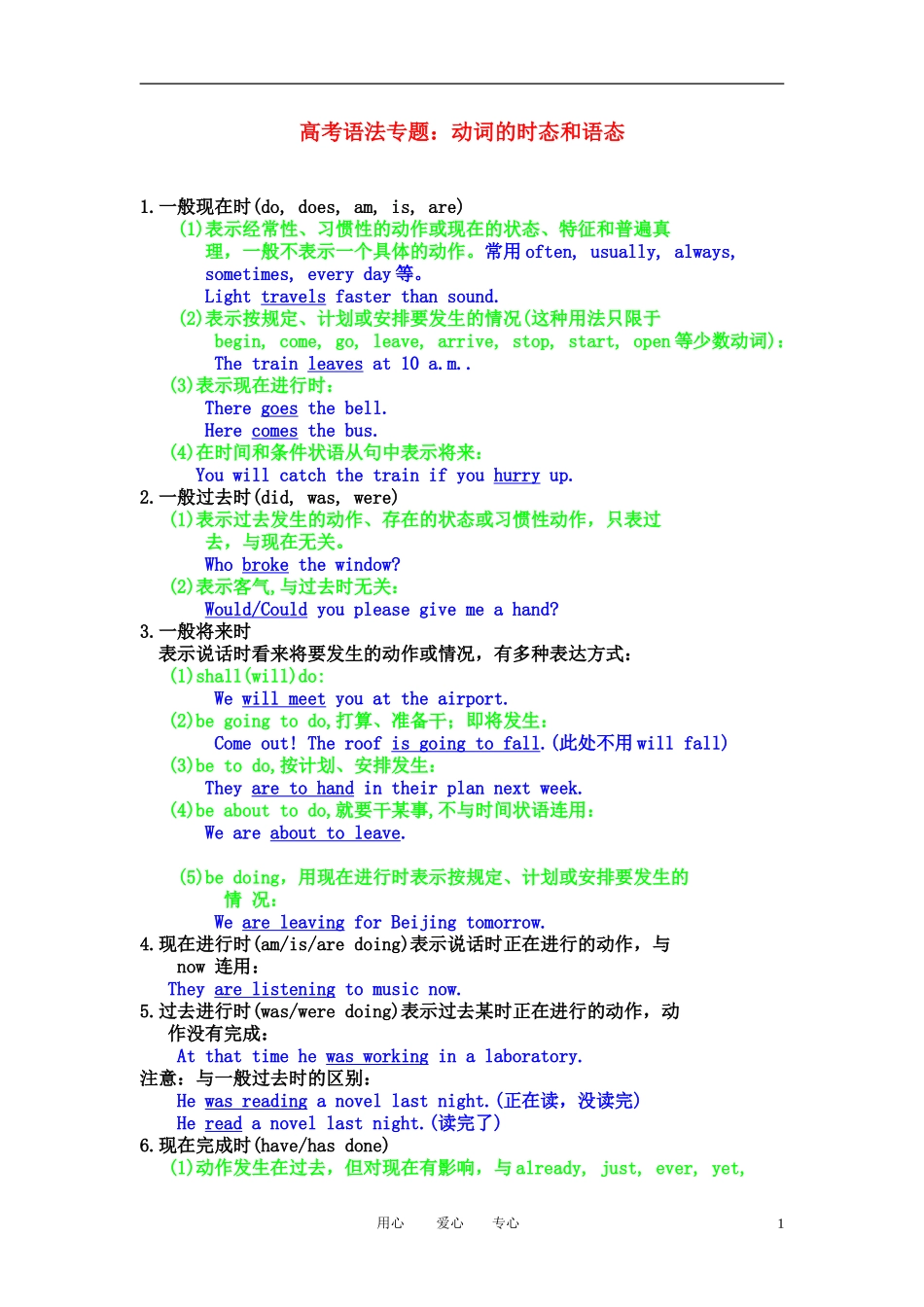高考语法专题:动词的时态和语态1.一般现在时(do, does, am, is, are) (1)表示经常性、习惯性的动作或现在的状态、特征和普遍真 理,一般不表示一个具体的动作。常用 often, usually, always, sometimes, every day 等。 Light travels faster than sound. (2)表示按规定、计划或安排要发生的情况(这种用法只限于 begin, come, go, leave, arrive, stop, start, open 等少数动词): The train leaves at 10 a.m.. (3)表示现在进行时: There goes the bell. Here comes the bus. (4)在时间和条件状语从句中表示将来: You will catch the train if you hurry up.2.一般过去时(did, was, were) (1)表示过去发生的动作、存在的状态或习惯性动作,只表过 去,与现在无关。 Who broke the window? (2)表示客气,与过去时无关: Would/Could you please give me a hand?3.一般将来时 表示说话时看来将要发生的动作或情况,有多种表达方式: (1)shall(will)do: We will meet you at the airport. (2)be going to do,打算、准备干;即将发生: Come out! The roof is going to fall.(此处不用 will fall) (3)be to do,按计划、安排发生: They are to hand in their plan next week. (4)be about to do,就要干某事,不与时间状语连用: We are about to leave. (5)be doing,用现在进行时表示按规定、计划或安排要发生的 情 况: We are leaving for Beijing tomorrow.4.现在进行时(am/is/are doing)表示说话时正在进行的动作,与 now 连用: They are listening to music now.5.过去进行时(was/were doing)表示过去某时正在进行的动作,动 作没有完成: At that time he was working in a laboratory.注意:与一般过去时的区别: He was reading a novel last night.(正在读,没读完) He read a novel last night.(读完了)6.现在完成时(have/has done) (1)动作发生在过去,但对现在有影响,与 already, just, ever, yet, 用心 爱心 专心1 before, recently 等连用,谓语用瞬间动词: Who has opened the door? (含义:The door was opened. It is still open. It’s cold.) (2)动作从过去某时开始,一直持续到现在,与 for, since 或 so far, these da...

